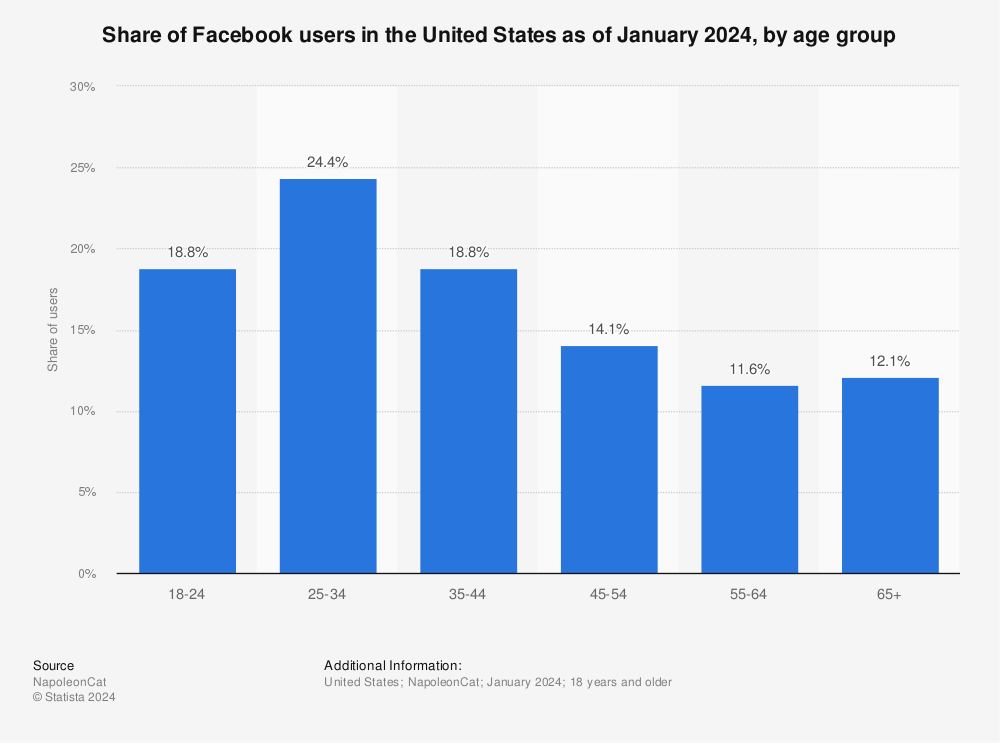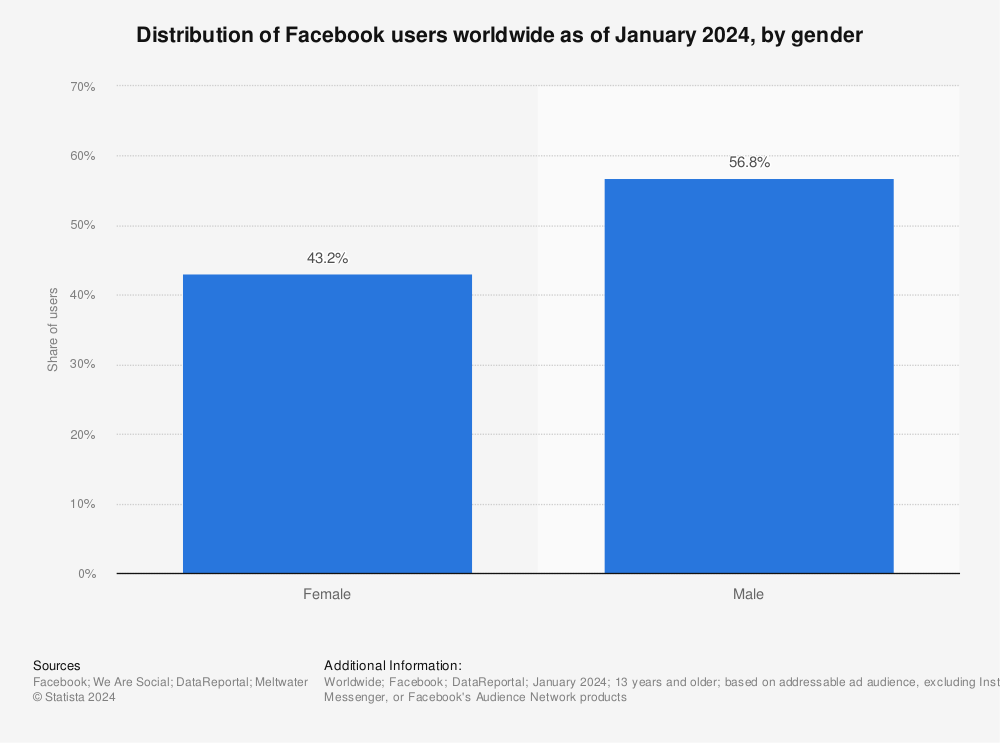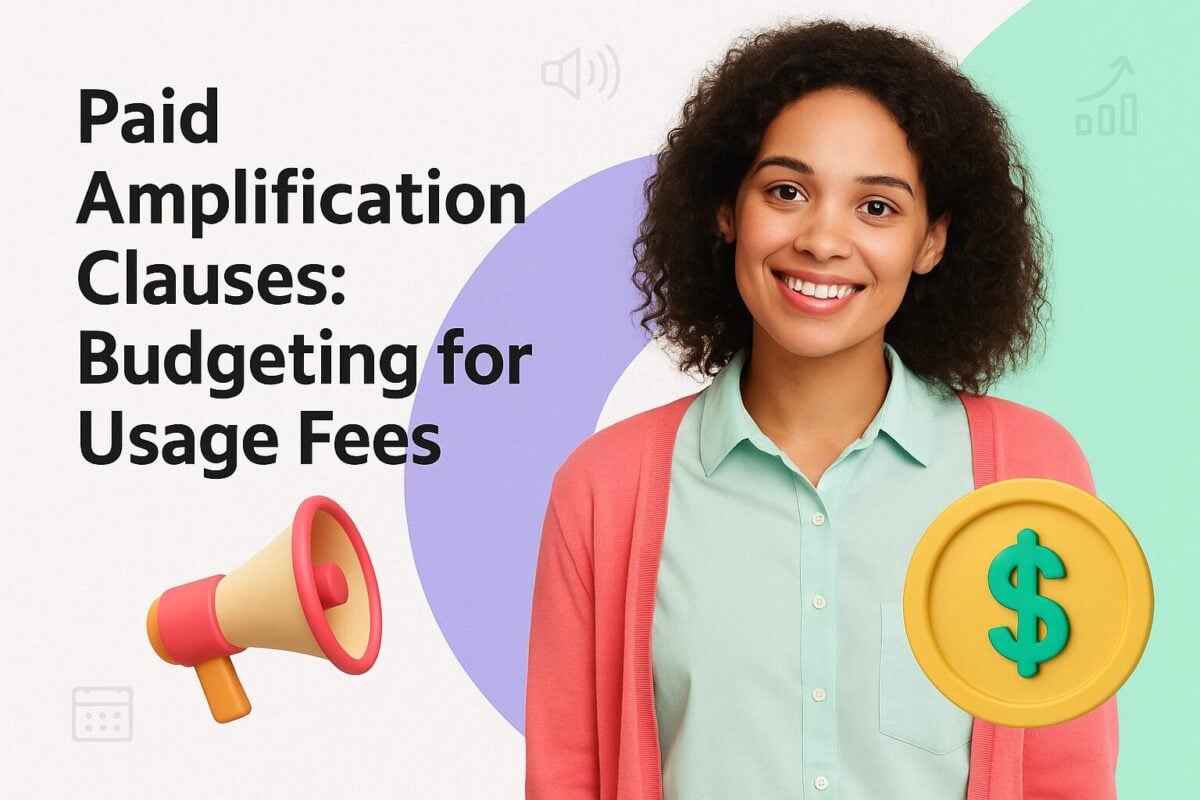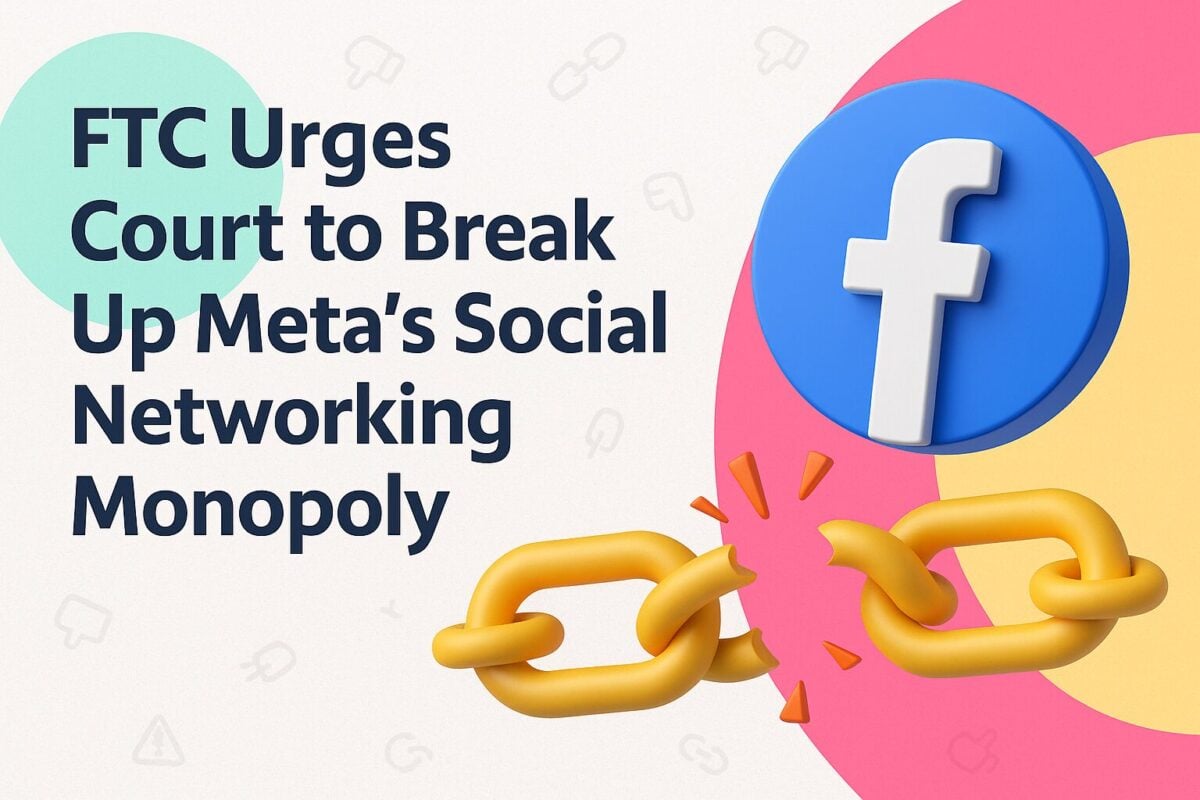As the third most visited website in the world, Facebook is an excellent place to advertise your business, allowing you to reach its 3.065 billion active users.
Like Google and YouTube, most advertisers know how crucial it is to target the right audience on Facebook. Facebook earning nearly $135 billion in ad revenue in 2023 is a testament to this.
But how can you find and target the right audience on Facebook? The answer lies in Facebook Audience Insights, Meta's powerful analytical tool that helps you understand your target audience's demographics, purchase activity, location, Facebook usage, and more.
Let's discuss how you can use Facebook Audience Insights in 2024.
What Is Facebook Audience Insights?
Facebook Audience Insights is an analytical tool that ''gives you aggregated information about two groups of people – people connected to your Page and people on Facebook – so you can create content that resonates and easily find more people like the ones in your current audience.''

Source: facebook.com
Businesses can get anonymous or aggregate information about their audiences in the following ways:
- Demographics: Learn about your audience's lifestyle, age, gender, education, job role, household size, and relationship status.
- Page Likes: See which top pages your target audience likes in different categories, such as sports or fashion.
- Facebook Usage: Check the frequency of your target audience's activity on Facebook and their device usage.
- Location: Find out where your target audience lives.
- Language: Discover which language(s) your target audience speaks.
- Purchase Activity: Get insights into the purchase behavior and spending methods of your target audience. For example, a purchase behavior may be buying a lot of camping gear, and the purchase method may be in-store or online.
You can see all this information about the following groups:
- Facebook users
- People who are connected to your Facebook Page
- People in your Customer Audiences (segments you've created for ad targeting from your current customer base)

How Does Audience Insights Differ From Page Insights?
While Facebook Page Insights offers information specifically about the performance of your own business page, Audience Insights focuses on providing insights about the larger group of people your business is trying to reach.
So, Page Insights will show you how people interact with your page, such as likes, shares, and comments. Facebook says that you can use these insights to understand engagement patterns and to
learn which posts have the most engagement and see when your audience is on Facebook.
Audience Insights has more to do with understanding your target audience as a whole.
How to Use Facebook Audience Insights in 2024?
The primary use case of Facebook Audience Insights is better customer targeting. But that's not it.
Let's look at some ways you can use Facebook Audience Insights.
1. To Target Relevant Audiences
Let's say you're a skincare brand that caters to a wide range of skincare needs, such as anti-aging products and acne-prone skin. The target audience for both use cases may differ.
For instance, the target audience for your anti-aging products may be women over 40 with an income over $50,000 living in urban areas. On the contrary, the target audience for your acne-prone skin products may be teenagers or young adults with little to no disposable income.
Facebook Audience Insights can help you target both groups individually. It allows you to customize your target audience with filters like age, location, gender, language, etc.
The tool has an ''audience meter'' that lets you see if your audience range is too broad or specific. Somewhere between 2 to 10 million people is the right size.
So you can iterate accordingly.
Businesses with larger audience sizes, such as retail stores, can further zone in on audience interests. Some shared interests you can target are:
- Food and drink
- Entertainment
- Family and relationships
- Fitness and wellness
- Business
- Hobbies and activities
Once you have narrowed down your target audience, you can create highly targeted ads to increase the likelihood of conversions.
2. To Create Lookalike Audiences
A lookalike audience is a way your ads can reach new people who are likely to be interested in your business because they share similar characteristics to your existing customers.
A lookalike audience is exactly how it sounds. It's a group of people who resemble your existing target audience.
This can help expand your reach and potentially introduce you to a new set of customers. Here's how it works:
- Start by using Audience Insights to learn more about your target audience. Identify key characteristics like demographics and interests.
- Then, go to the ''create audience'' tab on Facebook and create a custom audience. Facebook recommends
using a group of 1,000 to 50,000 of your best customers based on lifetime value, transaction value, total order size or engagement.
- Select that audience as the source audience of your lookalike audience.
- Set the desired location and size of your lookalike audience. Facebook recommends
a source audience that has between 1,000 and 5,000 people.
When creating a lookalike audience, the number of people in your source audience isn't the only factor to consider.
You also need to think about the quality of your source audience. It's better to include your best customers instead of just a large number of people.
If you want to create a greater impact, you can further use Facebook's lookalike expansion to display your ads to people outside your lookalike audience.
This way, you can reach even more potential customers who may not be directly similar to your source audience but may still have a high likelihood of being interested in your products or services.
3. To Compare Audience Insights
Depending on your business size and type, chances are Facebook isn't the only channel you're using.
Also, a single analytics tool shouldn't be taken as the complete truth. Facebook Audience Insights is a great tool to compare data from different sources.
Here are some sources for comparison:
- Ecommerce platforms like Shopify
- CRM tools like HubSpot or Salesforce
- Google Analytics
- Google Ads
- Email marketing tools like Mailchimp
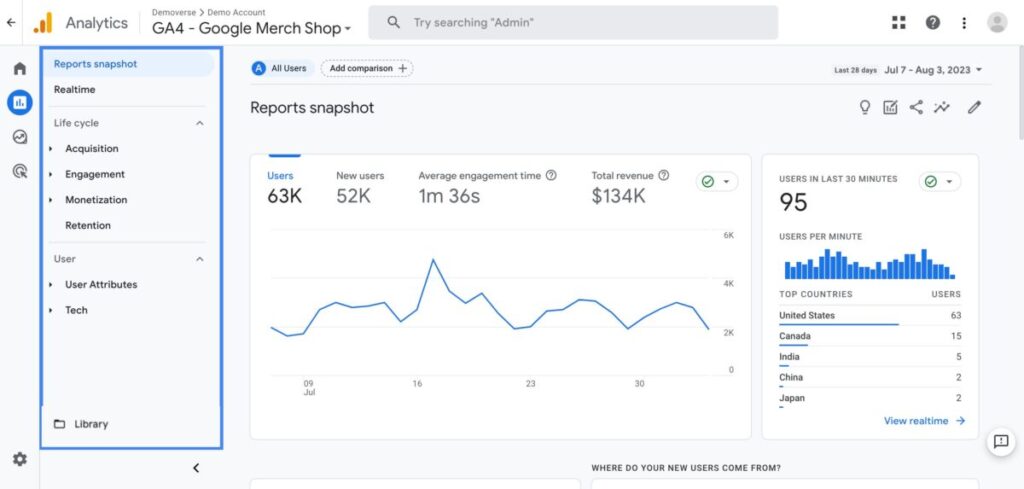
Source: support.google.com
Each of these platforms gives you pretty much the same data, but in different formats and with a slightly different focus.
For example, Facebook Analytics might show that your audience is predominantly female, while Google Analytics will tell you that your website visitors are mostly using mobile devices.
When you compare data from different sources, you can find similarities in them to ensure you're targeting the right audience.
Let's say Audience Insights shows that your audience is aged 20 to 35. You see the same trend on social media, where most of your followers are in this age group.
Then, you check your Google Analytics and see that the majority of your website visitors fall in the same age range.
Your CRM highlights the same thing.
Now, you have a high certainty that your target audience is indeed within this age range. So, your ads are definitely targeted right and will yield desired results.
4. To Segment Your Audience
Audience segmentation is integral to personalization. If you're not segmenting your audience, you're most likely sending out generic messages that do not resonate with them.
Facebook Audience Insights helps in breaking down your audience into different segments. For example, you can segment your audience by age.
Although Facebook has a reputation as the ''old people'' social platform, most of its users are aged between 25 and 34.
If your target audience is somewhere in this age range, Audience Insights will be your go-to tool to narrow down that segment even further.
For example, you can then segment by gender. Nearly 56.8% of Facebook users identify as males, compared to 43.2% who identify as females.
That's another layer of segmented data you can use to refine your target audience even further.
You can also segment by job role, education, and relationship status. Knowing the job roles gives you insight into their interests and purchasing power, too.
Together, this information can inform your marketing strategy.
For example, men aged 24 to 34 who work in the corporate sector may respond better to high-end luxury products. If they're also in relationships, you can tailor your ads to promote couple packages or gifts for their significant other.
5. To Test Demographic Targeting for iPhone Users
The iOS 14 update has introduced new privacy features that require users to give explicit permission for apps to track their activity and data. Due to these tracking restrictions, it's now harder for marketers to get granular data about their audience demographics in Facebook ad campaigns.
In simple words, it means you won't get explicit details of which demographic is converting in your ad campaigns. Instead, you get aggregated data about the performance of your audience.
However, you shouldn't let that stop you from considering demographics in your campaigns.
Audience Insights can help. It can give you ideas of segments on which you can test your ads.
For example, Audience Insights highlights two main segments of your audience:
- Women in high-paying corporate jobs
- Men who own their own businesses.
You can then create a separate ad set for each segment. Test both out and then compare the results.
If one segment performs significantly better, allocate more budget to that ad set.
6. To Optimize Organic Content
It might come as a surprise to some but Facebook remains a leading social media platform for audiences to consume content. In fact, 30% of US adults who use social media to get their news turn to Facebook.

That makes Facebook more popular than YouTube, X, TikTok, and Instagram in terms of news consumption.
As a marketer, you can't afford to ignore the organic potential of Facebook. Previously, it was a common belief that posting more frequently resulted in a higher organic reach.
However, a RivalQ study has debunked this claim. In fact, engagement on Facebook is one of the lowest in all social media platforms, with a median of 0.063% across all business sectors.

Also, a high frequency of posting doesn't automatically translate to more engagement. Media companies publishing over 60 posts per week have a lower engagement than education pages and influencers who post 10 times weekly.
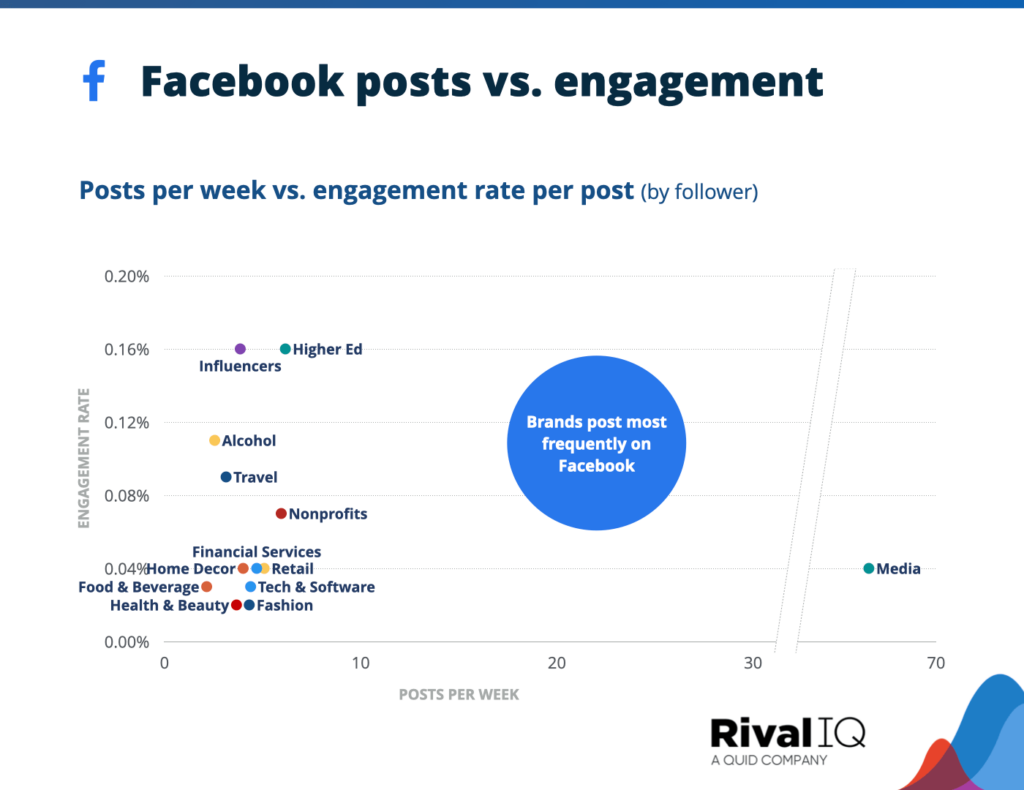
With these statistics in mind, if you want to optimize your organic content on Facebook, you need to focus on quality and relevance over quantity.
Facebook Audience Insights helps you get insights into your target audience and tailor your content accordingly.
For example, if most of your audience comprises young adults in college, your content should be more youth-friendly. You can create content with pop-culture references, use colloquial language, and even incorporate memes.
On the other hand, if your audience is mostly professionals in the finance industry, your content should be more formal and informative.
Whether you create more textual or visual content also depends on your audience. Although Facebook reports that half the time spent on the platform is on videos, it doesn't mean that all your audience is watching videos.
Statista data shows that 53% of adults aged 18 to 34 watch digital videos everyday. On the other hand, users aged 35 to 45 and aged 55 or older tend to watch fewer digital videos.
So, if your Audience Insights data shows that a significant portion of your audience is aged 35 or older, you should create a blend of video and textual content.
However, if your audience is mostly under 35, you can focus on creating more video content to engage them.
The more relevant your content, the higher the likelihood of it being shared. It also helps boost engagement, ultimately increasing conversions.
7. To Localize Your Presence
As mentioned earlier, Facebook's Audience Insights also tells you the following things about your audience:
- Location
- Languages
This data allows businesses to localize their presence.

Suppose you're a multinational business, and you want to see which geographical locations your customers are from. Also, you want to know which languages they speak.
You can use Audience Insights to find this information.
Let's say you discover that your audience comes from 10 countries. They also speak five different languages.
Based on this data, you can create content in five languages. Similarly, if your audiences are from countries with widely diverse cultures or religions, you can tailor your content to be respectful and inclusive of those differences.
Suppose Audience Insights tells you that the majority of your audience is from Muslim-majority countries. Besides creating content with respect to their beliefs, you can also incorporate Islamic holidays or special events into your marketing strategy.
For example, Woolworths creates an Eid section on its South African website close to Eid to cater to its Muslim customers.
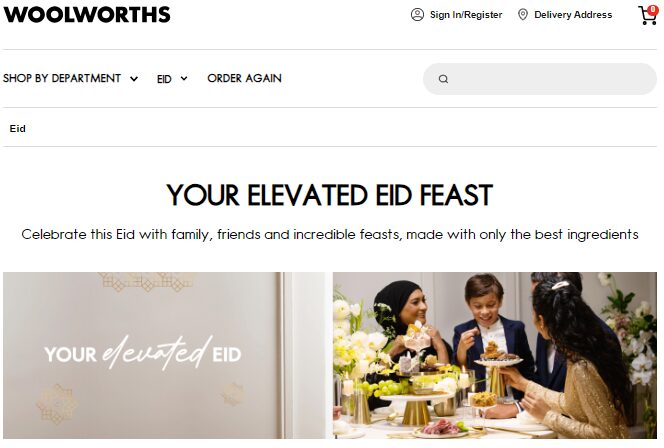
Source: woolworths.co.za
These insights also assist in making your website more accessible to people of different nationalities.
For example, you can use this data to create different versions of your website for each region. Offer different language options, currency conversion, payment options, etc.
Conclusion
To sum up, Audience Insights is a handy tool to optimize everything from your ad campaign to content marketing. The insights you gather from this tool are not only limited to your followers or customers but can also be applied to potential audiences on Facebook.
However, don't use Audience Insights in isolation. Combine it with other tools and platforms to get a complete picture of your audience's attributes.
